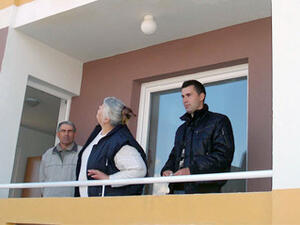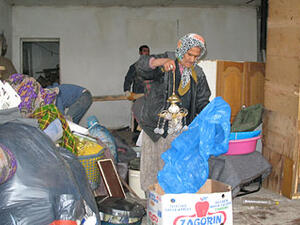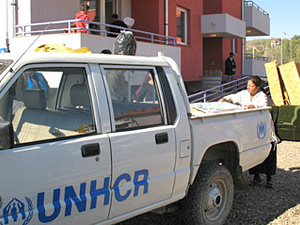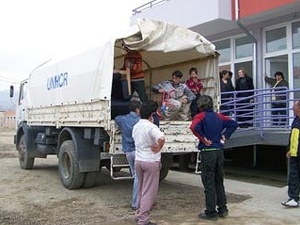FYR of Macedonia: rate of returns remains low
FYR of Macedonia: rate of returns remains low
The rate of refugee returns from Kosovo to the former Yugoslav Republic of Macedonia (FYROM) remains low, at less than 100 people per day. This reflects slow progress in the peace process. In all, however, more than 57,000 refugees have returned since late June. UNHCR is reviewing the refugee caseload in Kosovo and initial indications show that the number is less than 25,000. The [former Yugoslav Republic of] Macedonian Red Cross says there are also 53,700 people who are internally displaced in FYROM, 60 percent of them ethnic Macedonians.
Meanwhile, UNHCR is continuing its programmes to help build confidence in the 13 August peace agreement. Following the success of its programme to transport both communities across ethnic lines and checkpoints in the troubled Tetovo region, UNHCR last week started another bus service in the Kumanovo-Lipkovo area to promote freedom of movement. The UNHCR bus makes two round trips per day from Kumanovo, 45 km north-east of Skopje, to nearby Lopate, Opae and Lipkovo. The bus transports ethnic Macedonians visiting their homes at Lopate and Opae and ethnic Albanians at Lipkovo and surrounding villages.
Since the weekend, UNHCR has been transporting water to the village of Ljuboten, 10 km north of the capital, where 1,300 of its 2,600 residents have returned since it was abandoned in early August. The water supply in Ljuboten is generally poor and wells are now dry. UNHCR is looking at the possibility of repairing the water supply system in the village under the our programme of "quick impact projects."
Yesterday (Monday), UNHCR also sent to Ljuboten three truckloads of relief packages containing mattresses, plastic sheeting, hygienic kits and tools. Another seven truckloads of relief items were sent to the nearby village of Radusa, just outside Skopje. Of Radusa's pre-war population of 2,700, about 2,100 have returned.









